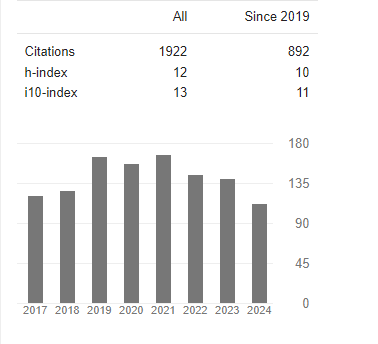Comparative Effectiveness of Virtual Laboratory Instructional Package in Teaching Chemistry in Private and Public Secondary Schools
Abstract
Samuel Toyin Famuwagun, Folasade Busayo Ojobola
The study investigated Comparative Effectiveness of Virtual Laboratory Instructional Package in Teaching Chemistry in Private and Public Secondary Schools in Ondo State, Nigeria. The purpose of the study was to compare the performance of students in chemistry in both private and public secondary schools in Ondo state using Virtual Laboratory Instructional Package. The study adopted the quasi-experimental pretest/posttest control group design. The sample for the study consisted of 183 senior secondary school two (SSSII) science students that were selected across the three senatorial districts of Ondo state using multistage sampling techniques. Two groups were involved in the study; the experimental group and the control group. The students in the experimental group were exposed to virtual laboratory instructional package while the control group was taught chemistry with the conventional method. One instrument; Chemistry Achievement Test was used to collect data for the study. The reliability of the instrument was ascertained through test-re-test method and the reliability index of 0.75 was obtained for the instrument. Hypotheses 1, 2 and 3 were tested with Analysis of Covariance (ANCOVA). However, Multiple Classifications Analysis (MCA) was used to identify the variable that contributed to the difference among groups. All the hypotheses were tested at 0.05 level of significance. The findings of the study showed that students exposed to Chemistry practical through virtual laboratory Instructional package in private secondary schools performed significantly better than their counterparts in public secondary schools. It was also found from the study that, gender has no effects on student’s performance in public secondary schools meanwhile; there was gender difference in the performance of students in private secondary schools in favour of female students. Based on the findings, it was recommended that Government at all levels should endeavour to provide information and communication facilities like computer based instructional package in schools to teach chemistry and such must be made accessible to all students, so as to promote interactive and individualized learning among secondary school students.



